Project Overview
Commodities
Practices
- Crop Production: cover crops, silvopasture
- Pest Management: mulches - living
Proposal summary:
Our Approach
We propose to reduce materials cost, labor cost, and tree mortality by replacing conventional “landscaping” materials and maintenance activities with the “pasture-focused” materials and activities regularly employed by livestock producers in the Southeast.
Specifically, we propose to replace compost, mulch, gravel, ongoing watering, and mowing with “living mulch,” (i.e. cover crops), “bramble” deterrents, adjustable polywire fencing, and carefully executed grazing management. We estimate that we can reduce expenses per planted tree by 30-50%.
Living Mulch
Many efforts to establish trees utilize mulch and/or ongoing mowing or spraying, to suppress weed competition. We will test the viability of using cover crops as a “living mulch” alternative. Cover crops have been shown to reduce weed competition, conserve moisture, and benefit soil health (1). We hypothesize that cover crops are an effective and affordable solution to weed suppression. Furthermore, by supporting tree health and drought tolerance, living mulch may reduce tree mortality from non-browsing causes.
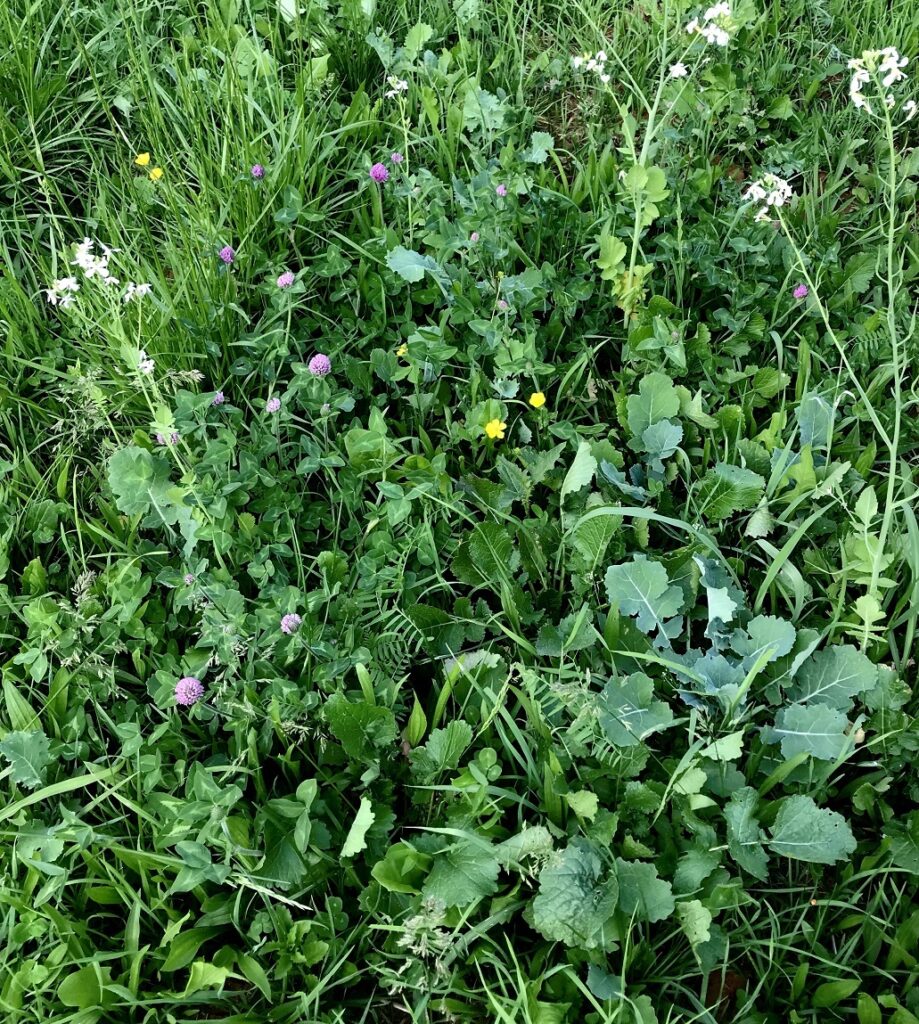
Plant Browsing Deterrents: “Brambles”
In recent years, conservationists in the UK have concluded that using “brambles” (Rubus spp.) to naturally regenerate forests is a more cost-effective afforestation strategy than traditional tree-planting (2). These “brambles” are early succession natives with thorns that deter herbivory. They provide saplings protection, only to be shaded out later as those saplings mature. A similar concept was tested in a silvopasture application in SARE # FNE19-939, “Tree Regeneration and Establishment Strategies in Silvopasture and Sugarbush Systems.” However, this case study took place in a woodland context, and trees were planted into existing invasive species (Japanese barberry, Multiflora Rose).
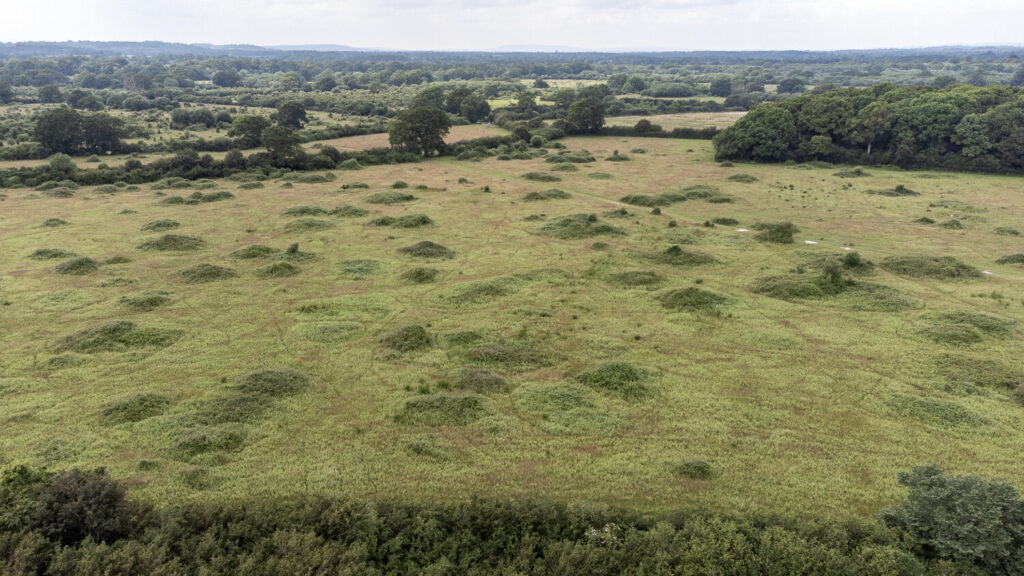
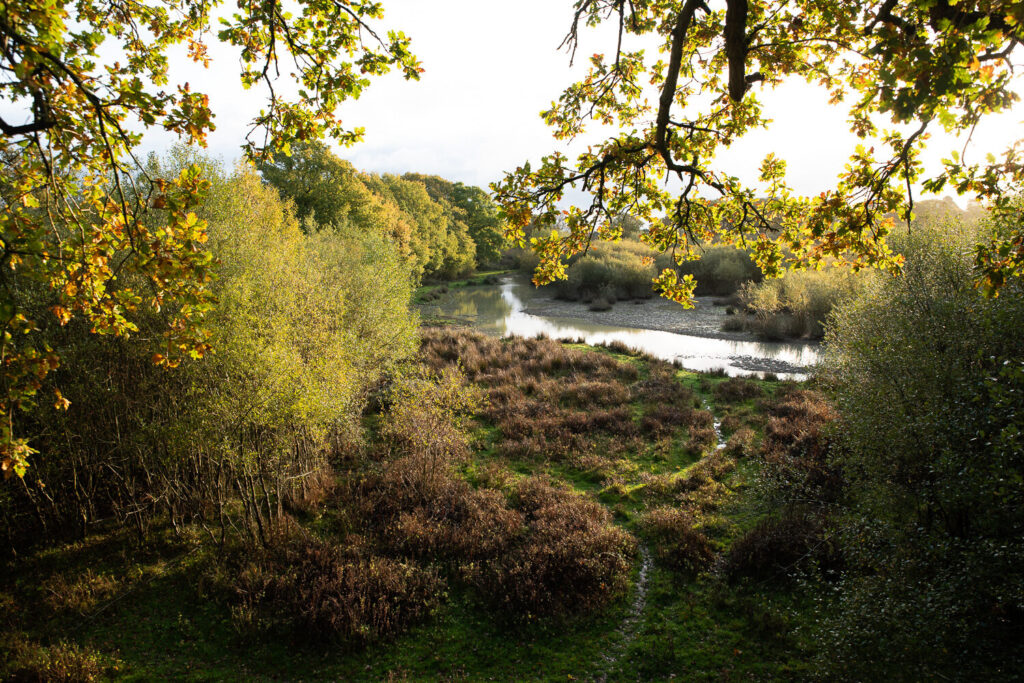
We propose to test this concept out with native species, in new silvopasture establishment, into existing pasture. We will use three native species of “plant deterrent” (PD) -- that is, a thorned woody plant (e.g. Rubus spp., Aralia spinosa, Crataegus sp., or Gleditsia triacanthos, pending availability). These will be planted as cuttings around the target silvopasture tree species (see Methods for target silvopasture species) and initially protected by polywire fencing. We will compare the “PD” method to the methods recommended as most cost-effective by prior research: plastic tubes, plastic tubes + polywire fencing, and fencing alone (3, 4). We hypothesize that PDs may be as effective as other deterrent methods and/or may be less expensive to obtain and install on a large scale. They may also allow one to avoid the well-documented performance pitfalls and environmental downsides documented by others (5).
Please note, PDs are NOT permanent farm improvements, as they are early successional species and will not persist over time. They are being planted as cuttings and used here only as trials for deterrent methods. Target silvopasture trees ARE considered permanent improvements, and will not be included in the budget. (See Methods.)
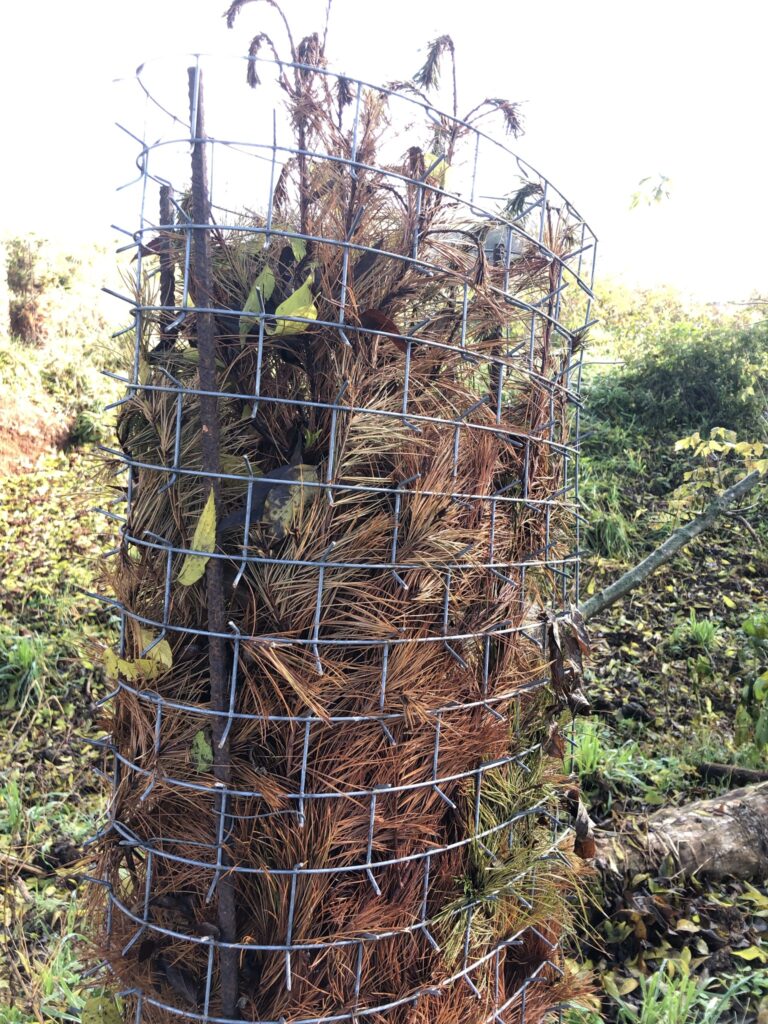
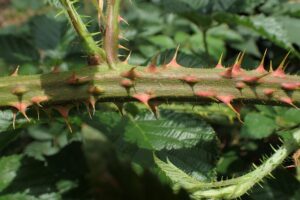
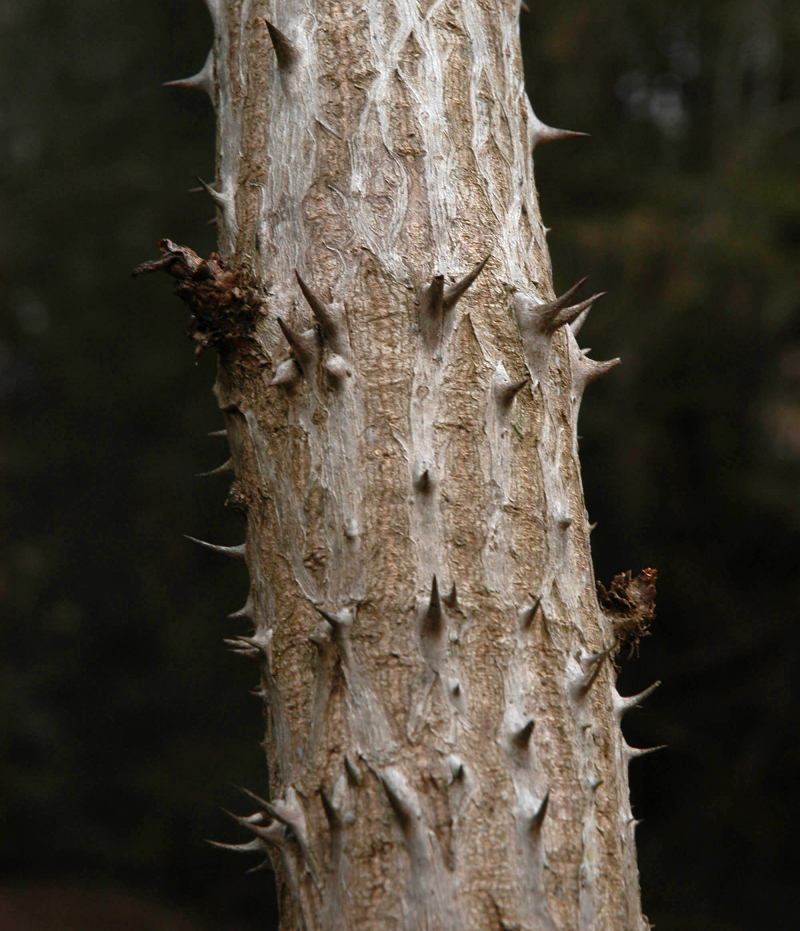
(1) https://www.nrcs.usda.gov/wps/portal/nrcs/detail/ny/technical/?cid=nrcs144p2_027252
(2) https://www.bbc.com/future/article/20210524-the-reason-wild-forests-beat-plantations
(3) SARE Project #ONC16-017, Savanna Institute, 2019.
(4) SARE Project # LNE20-405R, Chesapeake Bay Foundation, ongoing.
(5) https://www.sciencedirect.com/science/article/abs/pii/S0048969721033106
Project objectives from proposal:
Experimental Design
Our research design entails 8 treatments:
- Treatments 1-3: 3 species of PD,* planted one year before target trees (“Phased”)
- Treatments 3-6: 3 species of PD, planted same year as target trees (“Simultaneous”)
- Treatment 7: Plastic tree tube guards (not applicable for phased planting)
- Treatment 8: Polywire as only deterrent (not applicable for phased planting)
*PD = Plant deterrent (See Proposed Solution.)
These 8 treatments will be replicated in a cattle grazing scenario and a pastured poultry scenario. Furthermore, each of these replications will take place on two “zones” with varying soil. This research design results in 32 test plots (8 treatments x 2 grazers x 2 soils).
Each of the 32 test plots will be planted with 10 target silvopasture trees selected at random from among four species: Lombardy Poplar, Mulberry, Pine, and Persimmon (exact varieties pending availability). Silvopasture trees are considered permanent improvements and will NOT be included in the budget.
Site Preparation
All 32 test plots will be located in existing treeless pastureland dominated by fescue. Planting rows will be sprayed as a 4’ strip with two glysophate applications in the fall, followed by discing, subsoiling in the center of the row, and drilling a cover crop mixture over the area. A single-strand energized polywire fence will be installed on each side of the row to exclude cattle.
Planting
Treatments are into two planting schedules. In the “Phased” schedule, the PDs will be planted first, and the target species will be planted the following year. In the “Simultaneous” schedule, the PD and target species will be planted at the same time. That is, all target silvopasture species will be planted in February 2023, but half of the PDs will have been planted the year prior.
(Due to the limitations of the producer grant funding schedule, and the need for target trees to grow long enough to attain results, we will begin the first planting stage in February 2022, prior to the start of SARE funding. See Timetable.)
Trees species selected were mostly high-palatability species designed to attract browsing. We predict that once the exclusion fencing is removed, Lombardy Poplar and Mulberry will be coppiced by animals. In this planting, long-term survival of trees is less important to us than testing out efficacy of deterrent methods. For these reasons, trees will be planted at very close spacing (<5’). All trees and PDs will be planted directly into the soilsoiled line, through the expired cover crop.
Please note, PD cuttings are NOT permanent farm improvements, as they are early successional species and will not persist over time. They are being used here only as trials for deterrent methods. Target silvopasture trees ARE considered permanent improvements, and will not be included in the budget.
Grazing
To assess the effectiveness of the deterrent options, in the first year half the test plots will be grazed by poultry (free ranging inside poultry netting) and half will be grazed by cattle (~100,000 lbs per acre stocking density). Chickens will be removed in the second year, fencing added, and cattle will be allowed to graze all plots.
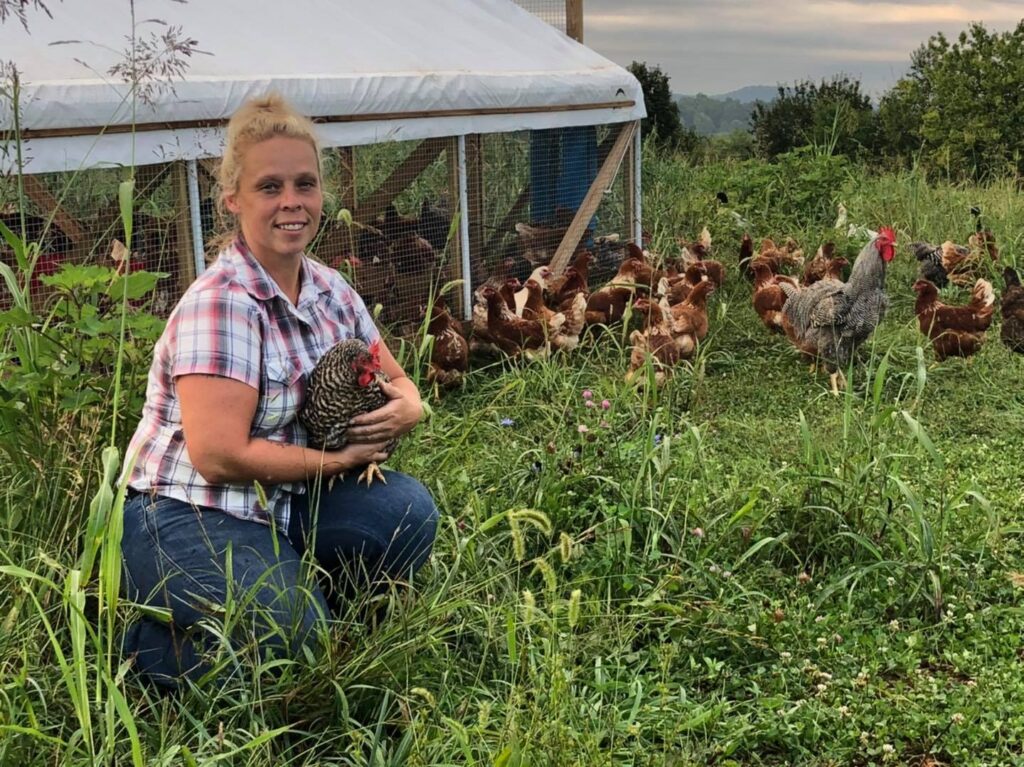
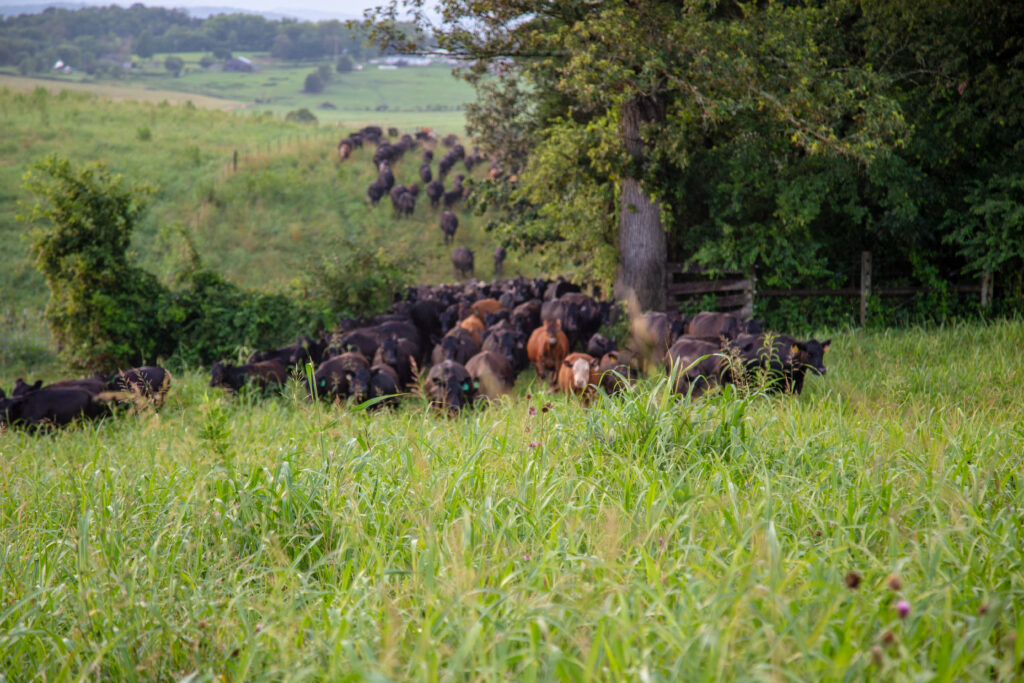
Measurements and Analysis
- Soil Analysis – Composite soil test of planting zones 1 and 2 using Waypoint Analysis S1M. (https://www.waypointanalytical.com/SoilsMedia)
- Browsing/Deterrence – After all grazings, browsing damage of each tree will be categorized as heavy, moderate, or no apparent damage.
- Grazing Behavior – During grazing, we will visually observe animals’ interaction with plantings and deterrents.
- Cost-Reduction - Materials and labor costs throughout the two-year project period will be documented and compared with precedent costs.
- Tree Mortality - Mortality will be tallied after every grazing, total mortality at 2 years will be compared with precedents.
Tree mortality and cost-reductions together will be analyzed to assess cost-effectiveness in terms of cost per surviving tree. Browsing deterrence will be compared between deterrent types. Basic statistical analysis will be used to determine the extent to which differences are statistically significant.